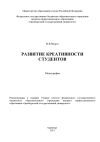Текст книги "Психология инноваций: подходы, методы, процессы"

Автор книги: Сергей Яголковский
Жанр: Личностный рост, Книги по психологии
сообщить о неприемлемом содержимом
Текущая страница: 21 (всего у книги 21 страниц)
Harrison Y., Horne J.A. One Night of Sleep Loss Impairs Innovative Thinking and Flexible Decision Making // Organizational Behavior and Human Decision Processes. 1999. May. Vol. 78. Iss. 2. P. 128–145.
Heap J. The Management of Innovation and Design. L.: Cassell, 1989.
Hekkert M.P, Negro S.O. Functions of Innovation Systems as a Framework to Understand Sustainable Technological Change: Empirical Evidence for Earlier Claims // Technological Forecasting & Social Change. 2009. No. 76. P. 584–594.
Hellstroem T. Innovation as Social Action // Organization Articles. 2004. Vol. 11. No. 5. P. 631–649.
Hirschman E. Innovativeness, Novelty Seeking, and Consumer Creativity // Journal of Consumer Research. 1980. 7 (December). P. 283–295.
Hirunyawipada Т., Paswan A.K. Consumer Innovativeness and Perceived Risk: Implications for High Technology Product Adoption // Journal of Consumer Marketing. 2006. Vol. 23. Iss. 4. P. 182–198.
Hisrich R.D. Entrepreneurship/Intrapreneurship // American Psychologist. 1990. Vol. 45. No. 2. P. 209–222.
Hoffmann S., Soyez K. A Cognitive Model to Predict Domain-Specific Consumer Innovativeness // Journal of Business Research, Corrected Proof. 2009. URL: http://www.sciencedirect.com.
Hofstede G. Cultural Dimensions for Project Management // International Journal of Project Management. 1983. February. Vol. 1. Iss. 1. P. 41–48.
Hofstede G. Culture's Consequences: International Differences in Work-Related Values. Beverly Hills (CA): Sage Publications, 1980.
Hofstede G. Cultures and Organizations: Software of the Mind. L.: McGraw Hill, 1991.
House R.J., Spangler W.D., Woycke J. Personality and Charisma in the U.S. Presidency: A Psychological Theory of Leadership Effectiveness //Administrative Science Quarterly. 1991. No. 36. P. 364–396.
Howard-Jones P.A., Murray S. Ideational Productivity, Focus of Attention, and Context // Creativity Research Journal. 2003. Vol. 15. No. 2/3. P. 153–156.
Howell J.M., Alolio B.J. Transformational Leadership, Transactional Leadership, Locus of Control, and Support for Innovation // Journal of Applied Psychology. 1993. Vol. 78. No. 6. P. 891–902.
Hurley R.F. Group Culture and its Effect on Innovative Productivity // Journal of Engineering and Technology Management. 1995. July. Vol. 12. Iss. 1–2. P. 57–75.
Hussey D.E. The Innovation Challenge. Chichester (UK); N. Y.: Wiley, 1997.
Huy Q.N. An Emotion-Based View of Strategic Renewal // Advances in Strategic Management. 2005. Vol. 22. P. 3–37.
Jackson D.N. Manual for the Personality Research Form. Goshen: Research Psychologists Press, 1974.
Jaussi K.S., Dionne S.D. Leading for Creativity: The Role of Unconventional Leadership Behavior // The Leadership Quarterly. 2003. No. 14. P. 475–498.
Jung D-L., Chow C, Wu A. The Role of Transformational Leadership in Enhancing Organizational Innovation: Hypotheses and Some Preliminary Findings // The Leadership Quarterly. 2003. No. 14. P. 525–544.
Kahai S.S., Sosik J. J., Avolio B.J. Effects of Leadership Style, Anonymity, and Rewards in an Electronic Meeting System Context // The Leadership Quarterly. 2003. No. 14. P. 499–524.
Kanter R.M. The Change Masters: Innovations for Productivity in the American Corporation. N. Y.: Simon and Schuster, 1983.
Kasof J. Creativity and Breadth of Attention // Creativity Research Journal. 1997. Vol. 10. No. 4. P. 303–315.
Kelly J.R., Karau S.J. Entrainment of Creativity in Small Groups // Small Group Research. 1993. Vol. 24. P. 179–198.
Kelman H.C. Compliance, Identification, and Internalization: Three Processes of Opinion Change // Journal of Conflict Resolution. 1958. No. 2. P. 51–60.
Kehm B.M., Teichler U. Research on Internationalisation in Higher Education // Journal of Studies in International Education. 2007. Vol. 11. No. 3/4. P. 260–273.
Kets de Vries M.F.R. The Entrepreneurial Personality: A Person at the Crossroads // Journal of Management Studies. 1977. Vol. 14. No. 1. P. 34–57.
Kikoski C.K., Kikoski J.F. The Inquiring Organization: Tacit Knowledge, Conversation, and Knowledge Creation Skills for 21st-century Organizations. Westport (CT): GREENWOOD Publishing Group, 2004.
Kirton M.J. Adaptors and Innovators – Why New Initiatives Get Blocked // Long Range Planning. 1984. April. Vol. 17. Iss. 2. P. 137–143.
Kirton M.J. KAI Manual. Hatfield: Occupational Research Centre, 1987.
Klein K., Dansereau F, Hall R. Levels Issues in Theory Development, Data Collection and Analysis // Academy of Management Review. 1994. Vol. 19. P. 195–229.
Kline S.J., Rosenberg N. An Overview of Innovation // The Positive Sum Strategy: Harnessing Technology for Economic Growth / ed. by R. Landau, N. Rosenberg. Washington (DC): National Academy Press, 1986.
Knight J. Internationalization: Concepts, Complexities and Challenges // International Handbook of Higher Education / ed. by J. Forest, P.G. Altbach. Dordrecht (The Netherlands): Springer Academic Publishers, 2007. P. 207–227.
Krampf R.F., Burns D.J., Ray man D.M. Consumer Decision Making and the Nature of the Product: A Comparison of Husband and Wife Adoption Process Location // Psychology and Marketing. 1993. March/April. Vol. 10. Iss. 2. P. 95–109.
Krueger N. The Impact of Prior Entrepreneurial Exposure on Perceptions of New Venture Feasibility and Desirability // Entrepreneur ship Theory and Practice. 1993. Vol. 18. No. LP. 5-21.
Lado A.A., Boyd N.G., Wright P. A Competency Based Model of Sustainable Competitive Advantage: Toward a Conceptual Integration // Journal of Management. 1992. Vol. 18. No. 1. P. 77–91.
Lampikoski K., Emden J.B. Igniting Innovation: Inspiring Organisations by Managing Creativity. N. Y.: Wiley, 1996.
Larsen T.J., Wetherbe J.C. An Exploratory Field Study of Differences in Information Technology Use Between More– and Less-Innovative Middle Managers // Information & Management. 1999. August. Vol. 36. Iss. 2. P. 93–108.
Laurila J., Lilja K. The Dominance of Firm-Level Competitive Pressures over Functional-Level Institutional Pressures: the Case of the Finnish-Based Forest Industry Firms // Organisational Studies. 2002. Vol. 23. No. 4. P. 571–597.
Lazarova M., Taylor S. Boundary less Careers, Social Capital., and Knowledge Management: Implications for Organizational Performance // Journal of Organizational Behavior. 2009. No. 30. P. 119–139.
Lazarus R.S. Emotion & Adaptation. N. Y; Oxford: Oxford University Press, 1991.
Lazarus R.S. From Psychological Stress to Emotions: A History of Changing Outlooks //Annual Review Psychology. 1993. No. 44. P. 1–21.
Leavitt C., Walton J. Development of a Scale for Innovativeness // Advances in Consumer Research. Vol. 2 / ed. by M.J. Schlinger. Ann Arbor (MI): Association for Consumer Research, 1975. P. 545–554.
Lee K., Rho S., Kim S., Jun G.J. Creativity-Innovation Cycle for Organisational Exploration and Exploitation: Lessons from Neowiz – A Korean Internet Company // Long Range Planning. 2007. August-October. Vol. 40. Iss. 4–5. P. 505–523.
Lee H.Y., Qu K, Kim Y.S. A Study of the Impact of Personal Innovativeness on online Travel Shopping Behavior – A Case Study of Korean Travelers // Tourism Management. 2007. June. Vol. 28. Iss. 3. P. 886–897.
Liayanage S., Greenfield P.F., Don R. Towards a Fourth Generation R&D Management Model-Research Networks in Knowledge Management // International Journal of Technology Management. 1999. No. 8 (3/4). P. 372–394.
Lowe A. The Basic Social Processes of Entrepreneurial Innovation // International Journal of Entrepreneurial Behaviour & Research. 1995. No. 1 (2). P. 54–76.
Lowe К.В., Kroeck G.K., Sivasubramaniam N. Effectiveness Correlates of Transformational and Transactional Leadership: A Meta-Analytic Review of the MLQ Literature // Leadership Quarterly. 1996. Vol. 7. No. 3. P. 385–425.
Lu J., Yao J.E., Yu C.-S. Personal Innovativeness, Social Influences and Adoption of Wireless Internet Services via Mobile Technology // The Journal of Strategic Information Systems. 2005. September. Vol. 14. Iss. 3. P. 245–268.
Lundvall B.A., Johnson B. The Learning Economy // Journal of Industry Studies. 1994. No. LP. 23–42.
Lynn G.S., Morone J.G., Paulson A.S. Marketing and Discontinuous Innovation: The Probe and Learn Process // California Management Review. 1996. No. 38 (3). P. 8–37.
Mackworth N. Originality // American Psychologist. 1965. No. 20. P. 51–66.
Malerba F. Sectoral Systems of Innovation and Production // Research Policy. 2002. No. 31. P. 247–264.
Mancuso J.R. Fun and Guts: The Entrepreneur's Philosophy. Reading (MA): Addison-Wesley, 1973.
Manning K.C., Bearden W.O., Madden T.J. Consumer Innovativeness and Adoption Process // Journal of Consumer Psychology. 1995. Vol. 4. No. 4. P. 329–345.
Marakas G.M. Decision Support Systems in the Twenty-First Century. Upper Saddle River (NJ): Prentice Hall, 1999.
March J.G. Exploration and Exploitation in Organizational Learning // Organization Science. 1991. No. 2. P. 71–87.
Markard J., Truffer B. Technological Innovation Systems and the Multi-Level Perspective: Towards an Integrated Framework // Research Policy. 2008. No. 37. P. 596–615.
Martin M.J.C. Managing Technological Innovation and Entrepreneur ship. Reston (VA): Prentice-Hall, 1984.
Massey J. Managing Organisational Legitimacy: Communication Strategies for Organisations in Crisis // The Journal of Business Communication. 2001. Vol. 38. No. 2. P. 153–182.
Mayer R. Fifty Years of Creativity Research // Handbook of Creativity / ed. by R.J. Sternberg. Cambridge: Cambridge University Press, 1999. P. 449–461.
Mayer J.D., Salovey P The Intelligence of Emotional Intelligence // Intelligence. 1993. Vol. 17. No. 4. P. 433–442.
McAdam R.A. Multi-Level Theory of Innovation Implementation. Normative Evaluation, Legitimization and Conflict European Journal of Innovation // Management. 2005. Vol. 8. No. 3. P. 373–388.
McAdam R. Knowledge Creation and Idea Generation: A Critical Quality Perspective // Technovation. 2004. September. Vol. 24. Iss. 9. P. 697–705.
McGeown V. Dimensions of Teacher Innovativeness // British Educational Research Journal. 1980. Vol. 6. No. 2. P. 147–163.
Mendelsohn G. Associative and Attentional Processes in Creative Performance // Journal of Personality. 1976. Vol. 44. P. 341–396.
Menguc В., Auh S., Shih E. Transformational Leadership and Market Orientation: Implications for the Implementation of Competitive Strategies and Business Unit Performance // Journal of Business Research. 2007. No. 60. P. 314–321.
Midgley D.E Innovation and New Product Marketing. N. Y.: Halsted Press: John Wiley & Sons Inc, 1977.
Midgley D., Downing G. Innovativeness: The Concept and Its Measurement // Journal of Consumer Research. 1978. Vol. 4. P. 229–242.
Miller W.L. Innovation for Business Growth // Research-Technology Management. 2001. September-October. P. 26–41.
Mohamed M.Z., Richards T. Assessing and Comparing the Innovativeness and Creative Climate of Firms // Scandinavian Journal of Management. 1996. Vol. 12. No. 2. P. 109–121.
Mohr L.B., Lawrence B. Determinants of Innovation in Organizations // American Political Science Review. 1969. March. No. 63. P. 11 1-126.
Moore C.F. Understanding Entrepreneurial Behavior: A Definition and Model // Best Paper. Proceeding of the National Academy of Management / ed. by J.A. Pearce, R.B. Robinson, 1986. P. 66–70.
Moore W.L. Tushman M.L. Managing Innovation over the Product Life Cycle // Readings in the Management of Innovation / ed. by M.L. Tushman, W.L. Moore. Marshfield (MA): Pitman, 1982. P. 131–150.
Moulaert E, Martinelli E, Swyngedouw E., Gonzalez S. Towards Alternative Model(s) of Local Innovation//Urban Studies. 2005. October. Vol. 42. No. 11. P. 1969–1990.
Mudd S. The Place of Inovativeness Dels of the Adoption Process: an Integrative Review//Technovation. 1990. Vol. 10. Iss. 2. P. 119–136.
Mueller S.L., Thomas A.S. Culture and Entrepreneurial Potential: A Nine Country Study of Locus of Control and Innovativeness // Journal of Business Venturing. 2001. January. Vol. 16. Iss. 1. P. 51–75.
Mumford M.D., Gustafson S.B. Creativity Syndrome: Integration, Application, and Innovation // Psychological Bulletin. 1988. No. 103. P. 27–43.
Mumford M.D., Licuanan В. Leading for Innovation: Conclusions, Issues, and Directions // The Leadership Quarterly. 2004. No. 15. P. 163–171.
Mumford M.D., Scott G.M., Gaddis В., Strange J.M. Leading Creative People: Orchestrating Expertise and Relationships // Leadership Quarterly. 2002. No. 13. P. 705–750.
Myers S., Marquis D.G. Successful Industrial Innovations. Washington: National Science Foundation, 1969.
Napier R.W., Gershenfeld M.K. Groups. Theory and Experience. Boston: Houghton Mifflin Company, 1993.
Narver J. C., Slater S.K, Tietje B. Creating a Market Orientation // Journal of Market Focused Management. 1998. Vol. 2. P. 241–255.
NijstadB.A., Stroebe W., Lodewijkx H.F.M. Cognitive Stimulation and Interference in Groups: Exposure Effects in an Idea Generation Task // Journal of Experimental Social Psychology. 2002. Vol. 38. P. 535–544.
Nijstad B.A., Stroebe W., Lodewijkx H.F.M. Production Blocking and Idea Generation: Does Blocking Interfere with Cognitive Processes? // Journal of Experimental Social Psychology. 2003. Vol. 39. P. 531–548.
Niosi J. Fourth-generation R&D: From Linear Models to Flexible Innovation // Journal of Business Research. 1999. No. 45. P. 111–117.
Nonaka I., Toyama R., Konno N. SECI, В a and Leadership: A Unified Model of Dynamic Knowledge Creation // Long Range Planning. 2000. Vol. 33. P. 4–34.
Normann R. Organizational Innovativeness: Product Variation and Reorientation // Adminisbrative Science Quarterly. 1971. June. Vol. 16. No. 2. P. 203–215.
OECD/EU/Eurostat, Guidelines for Collecting and Interpreting Innovation Data – Oslo Manual. 3d ed.
OECD. Paris, 2005.
Okazaki S. Lessons Learned from I-mode: What Makes Consumers Click Wireless Banner Ads? // Computers in Human Behavior. 2007. May. Vol. 23. Iss. 3. P. 1692–1719.
Osborn A.F. Applied Imagination. N. Y.: Shribner, 1957.
Osborn R.N., Marion R. Contextual Leadership, Transformational Leadership and the Performance of International Innovation Seeking Alliances // The Leadership Quarterly. 2009. No. 20. P. 191–206.
Paulus P.B., Dugosh K.L., Dzindolet M.T., Coskun H, Putman V.I. Social and Cognitive Influences in Group Brainstorming: Predicting Production Gains and Losses // European Review of Social Psychology. 2002. No. 12. P. 299–325.
Pearson P.H. Relationships between Global and Specified Measures of Novelty Seeking // Journal of Consulting and Clinical Psychology. 1970. Vol. 34. P. 199–204.
Perrewe P.L., Spector P.E. Personality Research in the Organizational Sciences // Research in Personnel and Human Resources Management. 2002. Vol. 21. P. 1–63.
Peters T. The Circle of Innovation. N. Y.: Vintage Books, 1999.
Pfeiffer W., Staudt E. Innovation // Handwoerterbuch der Betriebswirtschaft / ed. by E.v. Grochla, W. Wittmann. Stuttgart: Poeschel, 1975. P. 1943–1953.
Pirola-Merlo A., Mann L. The Relationship between Individual Creativity and Team Creativity: Aggregating across People and Time // Journal of Organizational Behavior. 2004. Vol. 25. Iss. 2. P. 235–257.
Plucker J.A., Renzulli J.S. Psychometric Approaches to the Study of Human Creativity // Handbook of creativity / ed. by R.J. Sternberg. Cambridge: Cambridge University Press, 1999. P. 35–62.
Prahalad C.K., Hamel G. Strategy as a Feld of Study: Why Search for a New Paradigm // Strategic Management Journal. 1994. No. 15 (special issue). P. 5–16.
Quintas J.В., Anderson P, Finkelstein S. Managing Professional Intellect: Making the Most of the Best // Harvard Business Review. 1996. March-April. Vol. 74. P. 71–80.
Razik T.A. Psychometric Measurement of Creativity // Creativity: Selected readings / ed. by P.E. Vernon. Harmondsworth: Penguin Books, 1970. P. 155–166.
Redmond M.R., Mumford M.D., Teach R. Putting Creativity to Work: Effects of Leader Behavior on Subordinate Creativity // Organizational Behavior and Human Decision Processes. 1993. No. 55. P. 120–151.
Rickards T. Stimulating Innovation – A Systems Approach. L.: Palgrave Macmillan, 1985.
Ritchey T. General Morphological Analysis. A General Method for Non-quantified Modeling. Adapted from the Paper «Fritz Zwicky, Morphologie and Policy Analysis)), Presented at the 16th EURO Conference on Operational Analysis. Brussels, 1998. URL: downloaded from www.swemorph.com.
Roberts E.B. Introduction: Managing Technological Innovation Technology-Based Organization // Sloan Management Review. 1987. No. 22. P. 19–34.
Robinson L. Jr., Marshall G.W., Stamps M.B. Sales Force Use of Technology: Antecedents to Technology Acceptance // Journal of Business Research. 2005. Vol. 58. P. 1623–1631.
Rodan S. Innovation and Heterogeneous Knowledge in Managerial Contact Networks // Journal of Knowledge Management. 2002. Vol. 6. Iss. 2. P. 152–163.
Rodan S., Galunic C. More than Network Structure: How Knowledge Heterogeneity Influences Managerial Performance and Innovativeness // Strategic Management Journal. 2004. June. Vol. 25. Iss. 6. P. 541–562.
Roehrich G. Consumer Innovativeness. Concepts and Measurements // Journal of Business Research. 2004. No. 57. P. 671–677.
Rogers E.M. Diffusion of Innovations. N. Y.: Free Press, 1995.
Rogers E.M. Diffusion of Preventive Innovations // Addictive Behaviors. 2002. No. 27. P. 989–993.
Rogers E.M. Diffusion of Innovations // Taking Care: Understanding and Encouraging Self-protective Behavior / ed. by N.D. Weinstein. N. Y: Cambridge University Press, 1983. P. 79–94.
Rogers E.M. Innovation, Theory of // International Encyclopedia of the Social & Behavioral Sciences / ed. by N. Smelser, P.B. Baltes. Amsterdam: Elsevier, 2004». P. 7540–7543.
Rogers E.M. Evolution: Diffusion of Innovations // International Encyclopedia of the Social & Behavioral Sciences. 20046. P. 4982–4986.
Rothwell R., Gardiner P. Invention, Innovation, Re-innovation and the Role of the User: A Case Study of British Hovercraft Development // Techno vation. 1985. No. 3.P. 167–186.
Rothwell R. Successful Industrial Innovation: Critical Success Factors for the 1990s // R&D Management. 1992. Vol. 22. No. 3. P. 221–239.
Rothwell R. Towards the Fifth-Generation Innovation Process // International Marketing Review. 1994. Vol. 11. No. 1. P. 7–31.
Roussel P.A., Saad K.M., Erickson T.J. Third Generation R&D: Managing the Link to Corporate Strategy. Boston: Harvard Business School Press, 1991.
Rubenson D.L., Runco M.A. The Psychoeconomic Approach to Creativity // New Ideas in Psychology. 1992. Vol. 10. No. 2. P. 131–147.
Rudd N.A. Appearance and Self-Presentation Research in Gay Consumer Cultures: Issues and Impact // Journal of Homosexuality. 1996. No. 31 (1). P. 109–34.
Scarbrough H., Corbett J.M. Technology and Organization: Power, Meaning and Design. L.: Routledge, 1992.
Schein E.H. Organizational Culture and Leadership. San Francisco: Jossey-Bass, 1992.
Schillewaert N., Ahearne M.J., Frambach R.T., Moenaert R.K. The Adoption of Information Technology in the Sales Force // Industrial Marketing Management. 2005. May. Vol. 34. Iss. 4. P. 323–336.
Scheinberg S., MacMillan I. An Eleven Country Study of the Motivations to Start a Business // Frontiers of entrepreneurship research / ed. by B. Kirchhoff et al. Wellesley (MA): Babson College, 1988.
Schneider В., Reichers A. On the Etiology of Climates // Personal Psychology. 1983. No. 36. P. 19–39.
Scott S.G., Bruce R. Determinants of Innovative Behavior: A Path Model of Individual Innovation in the Workplace // Journal of Product Innovation Management. 1994. Vol. 37. Iss. 3. P. 580–607.
Seidler-de Alwis R., Hartmann E. The Use of Tacit Knowledge within Innovative Companies: Knowledge Management in Innovative Enterprises // Journal of Knowledge Management. 2008. Vol. 12. No. 1. P. 133–147.
Shalley C.E., Zhou J., Oldham J.R. The Effects of Personal and Contextual Characteristics on Creativity: Where Should We Go from Here? // Journal of Management. 2004. December. No. 30. P. 933–958.
Shamir В., House R.J., Arthur M.B. The Motivational Effects of Charismatic Leadership: A Selfconcept Based Theory // Organizational Science. 1993. No. 4. P. 577–594.
Shane S.A. Why do some Societies Invent More than Others? // Journal of Business Venturing. 1992. No. 7. P. 29–46.
Shapero A., Sokol L. The Social Dimensions of Entrepreneurship // Encyclopedia of Entrepreneurship / ed. by C.A. Kent, D.L. Sexton, K.H. Vesper. Englewood Cliffs (NJ): Prentice-Hall, 1982. Siegel S., Kaemmerer W. Measuring the Perceived Support for Innovation in Organizations // Journal of Applied Psychology. 1978. Vol. 63. No. 5. P. 553–562.
Simmie J. Kondratiev Waves and the Future of British Cities // Futures. 1986. December. Vol. 18. Iss. 6. P. 787–794.
Simonton D.K. Creativity from a Historiometric Perspective // Handbook of Creativity / ed. by R.J. Sternberg. Cambridge: Cambridge University Press, 1999. P. 116–133.
Simonton D.K. Creativity in Personality, Developmental., and Social Psychology: Any Links with Cognitive Psychology? // Creative Thought: An Investigation of Conceptual Structures and Processes / ed. by T. Ward, S. Smith, J. Vaid. American Psychological Association, 2001. P. 116–133.
Simonton D.K. Exceptional Personal Influence: An Integrative Paradigm // Creativity Research Journal. 1995. No. 8. P. 371–376.
Smits R. Innovation Studies in the 21st Century: Questions from a User's Perspective // Technological Forecasting & Social Change. 2002. No. 69. P. 861–883.
Smits R., Kuhlman S. The Rise of Systemic Instruments in Innovation Policy // International Journal of Foresight and Innovation Policy. 2004. No. 1 (1/2). P. 4–32.
Sosik J. J., Avolio B.J., Kahai S.S. Effects of Leadership Style and Anonymity on Group Potency and Effectiveness in a Group Decision Support System Environment // Journal of Applied Psychology. 1997. No. 82. P. 89–103.
Sosik J.J., Kahai S.S., Avolio В J. Transformational Leadership and Dimensions of Creativity: Motivating Idea Generation in Computer-Mediated Groups // Creativity Research Journal. 1998. Vol. 11. No. 2. P. 111–121.
Stein B.S. Memory and Creativity // Handbook of Creativity / ed. by J.A. Glover, R.R. Ronning, C.R. Reynolds. N. Y.: Plenum Press, 1989. P. 163–176.
Steiner C.J. A Philosophy for Innovation: The Role of Unconventional Individuals in Innovation Success // Journal of Product Innovation Management. 1995. November. Vol. 12. Iss. 5. P. 431–440.
Sternberg J.R., Lubart T.I. The Concept of Creativity: Prospects and Paradigms // Handbook of Creativity / ed. by R.J. Sternberg. Cambridge: Cambridge University Press, 1999. P. 3–16.
Stieglitz N., Heine K. Innovations and the Role of Complementarities in a Strategic Theory of the Firm // Strategic Management Journal. 2007. January. Vol. 28. Iss. LP. 1-15.
Suchman M. Managing Legitimacy: Strategic and Institutional Approaches // Academy of Management Review. 1995. Vol. 20. No. 3. P. 571–601.
Swan J., Newell S., Scarbrough H., Hislop D. Knowledge Management and Innovation: Networks and Networking // Journal of Knowledge Management. 1999. Vol. 3. No. 4. P. 262–275.
Taatila V.P., Suomala J., Siltala R., Keskinen S. Framework to Study the Social Innovation Networks // European Journal of Innovation Management. 2006. Vol. 9.No.3. P. 312–326.
Takahashi Т., Vandenbrink D. Formative Knowledge: From Knowledge Dichotomy to Knowledge Geography – Knowledge Management Transformed by the Ubiquitous Information Society // Journal of Knowledge Management. 2004. Vol. 8. No. LP. 64–76.
Taminiau Y, Smit W., de Lange A. Innovation in Management Consulting Firms through Informal Knowledge Sharing // Journal of Knowledge Management. 2009. Vol. 13. No. LP. 42–55.
Taylor D. W., Berry P.C., Block С.К. Does Group Participation when Using Brainstorming Facilitate or Inhibit Creative Thinking? // Administrative Science Quarterly. 1958. No. 3. P. 23–47.
Tellis G.J., Yin E., Bell S. Global Consumer Innovativeness: Cross-Country Differences and Demographic Commonalities // Journal of International Marketing. 2009. Vol. 17. No. 2. P. 1–22.
Thatcher J.В., Loughry M.L., Lim J., McKnight D.K. Internet Anxiety: An Empirical Study of the Effects of Personality, Beliefs, and Social Support // Information & Management. 2007. No. 44. P. 353–363.
Thatcher J.В., Perrewe P.L. An Empirical Examination of Individual Traits as Antecedents to Computer Anxiety and Computer Self-Efficacy // MIS Quarterly. 2002. No. 26. P. 381–396.
Thompson J.D. Organizations in Action. N. Y.: McGraw-Hill, 1967.
Thompson V.A. Bureaucracy and Innovation // Administrative Science Quarterly. 1965. June. No. 10. P. 1–20.
Tierney P., Farmer S.M., Graen G.B. An Examination of Leadership and Employee Creativity: The Relevance of Traits and Relationships // Personnel Psychology. 1999. No. 52. P. 591–620.
Titus P. Marketing and the Creative Problem-Solving Process // Journal of Marketing Education. 2000. Vol. 22. Iss. 3. P. 225–235.
Torrance E.P. Torrance Test of Creative Thinking: Norms-technical Manual. Lexington: Personnel Press, 1974.
Torrance E.P. Understanding Creativity: Where to Start? // Psychological Inquiry. 1993. Vol. 4. No. 3. P. 232–234.
Torrance E.P, Ball O.E. Torrance Tests of Creative Thinking: Streamlined (revised) Manual Including Norms and Direction for Administering and Scoring Figural A and B. Benseville: Scholastic Testing Service, 1984.
Trott P. Innovation Management and New Product Development. Harlow: Prentice-Hall, 2002.
Udwadia E.E. Creativity and Innovation in Organizations: Two Models and Managerial Implications // Technological Forecasting and Social Change. 1990. August. Vol. 38. Iss. 1. P. 65–80.
Uhlmann L. Der Innovations Prozess in westeuropaeischen Industrielaendern. Berlin; Muenchen: Duncker & Humblot, 1978.
Van de Ven A.H. Central Problems in the Management of Innovation // Management Science. 1986. Vol. 32. P. 590–607.
Vandecasteele В., Geuens M. Revising the Myth of Gay Consumer Innovativeness // Journal of Business Research. 2009. No. 62. P. 134–144.
Van der Wende M. Missing Links: The Relationship between National Policies for Internationalization and those for Higher Education in General // National Policies for the Internationalization of Higher Education in Europe / ed. by T. Kalvemark, M. Van der Wende. Stockholm: National Agency for Higher Education & NUFFIC, 1997.
Venkatraman M.P. The Impact of Innovativeness and Innovation Type on Adoption // Journal of Retailing. 1991. Vol. 67. No. 1. P. 51–67.
Venkatraman M.P., Price L.L. Differentiating between Cognitive and Sensory Innovativeness // Journal of Business Research. 1990. No. 20. P. 293–315.
Wallach M.A., Kogan N.A. New Look at the Creativity – Intelligence Distinction // Creativity: Selected Readings / ed. by RE. Vernon. Harmondsworth: Penguin Books, 1970. P. 235–256.
Werr A., Stjernberg T. Exploring Management Consulting Firms as Knowledge Systems // Organization Studies. 2003. Vol. 24. No. 6. P. 881–908.
West M.A. Creativity and Innovation in Organizations, Management of // International Encyclopedia of the Social & Behavioral Sciences. Amsterdam: Elsevier, 2004. P. 2895–2900.
West M.A., Farr J.L. Innovation at Work // Innovation and Creativity at Work: Psychological and Organizational Strategies / ed. by M. West, J. Farr. Chichester (England): Wiley, 1990. P. 3–13.
Westphal J., Gulati R., Shortell S. Customisation or Conformity? An Institutional and Network Perspective on the Content and Consequences of TQM Adoption // Administrative Science Quarterly. 1997. Vol. 42. No. 2. P. 366–395.
Williams W.M., Yang L.T. Organizational Creativity // Handbook of Creativity / ed. by R.J. Sternberg. Cambridge: Cambridge University Press, 1999. P. 373–391.
Wilson-Evered E., Hartel C.E.J., Neale M. A Longitudinal Study of Work Group Innovation: The Importance of Transformational Leadership and Morale // Advances in Health Care Management. 2001. Vol. 2. P. 315–340.
Wilson J.P. Innovation in Organization: Notes Toward a Theory // Approaches to Organizational Design / ed. by J.D. Thompson. Pittsburgh: University of Pittsburgh Press, 1966.
Wind J., Mahajan V. Issues and Opportunities in New Product Development: An Introduction to the Special Issue // Journal of Marketing Research. 1997. February. No. 34. P. 1–12.
Wolfe R.A. Organizational Innovation: Review, Critique and Suggested Research Directions // Journal of Management Studies. 1994. Vol. 31. No. 3. P. 405–431.
Yoon J. How Team Leaders Use Salient Vision and Self-Sacrifice to Enhance Team Effectiveness //Advances in Group Processes. 2006. Vol. 23. P. 63–87.
Yukl G. Leadership in Organizations. Upper Saddle River (NJ): Prentice-Hall, 2001.
Zaltman G., Duncan R., Holbeck J. Innovations & Organizations. Malabar: John Wiley & Sons, 1984.
Ziegler R., Diehl M, Zijlstra G. Idea Production in Nominal and Virtual Groups: Does Computer Mediated Communication Improve Group Brainstorming // Group Processes and Intergroup Relations. 2000. Vol. 3. No. 2. P. 141–158.
Zucherman M. Sensation Seeking: Beyond the Optimal Level of Arousal. Hillsdale (NJ): Lawrence Erlbaum, 1979.
Zwicky К. Discovery, Invention, Research – Through the Morphological Approach. Toronto: The Macmillian Company, 1969.
Zwicky F. Wilson A. (Eds.), New Methods of Thought and Procedure: Contributions to the Symposium on Methodologies, Berlin: Springer, 1967.
Правообладателям!
Это произведение, предположительно, находится в статусе 'public domain'. Если это не так и размещение материала нарушает чьи-либо права, то сообщите нам об этом.








































